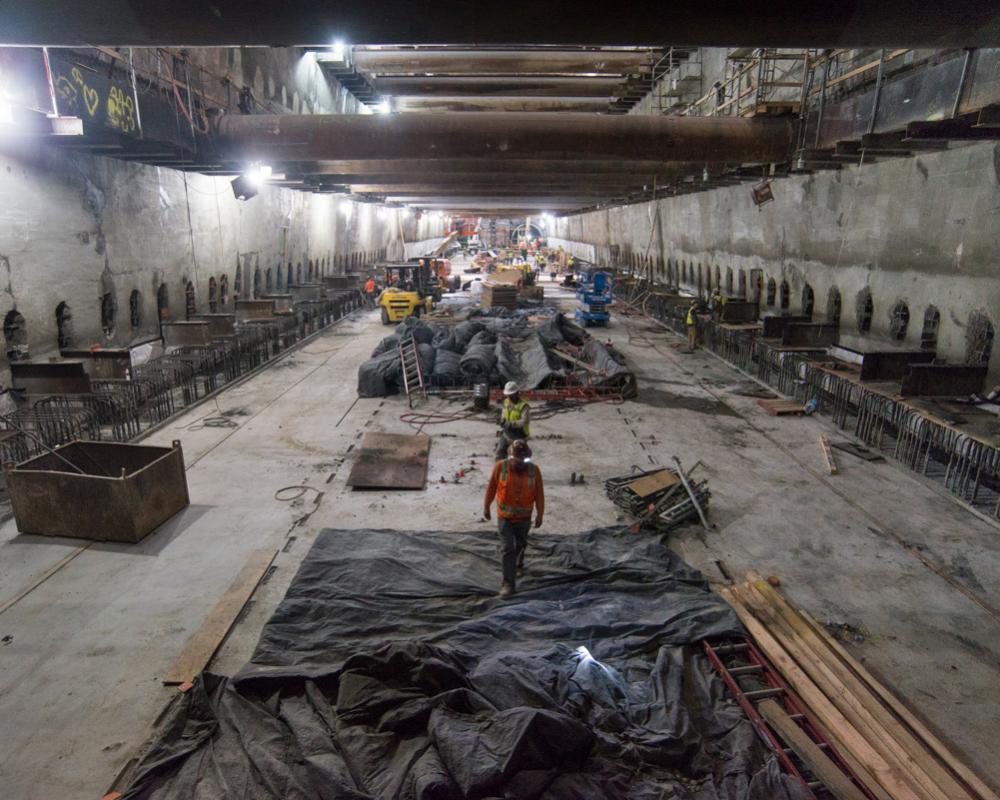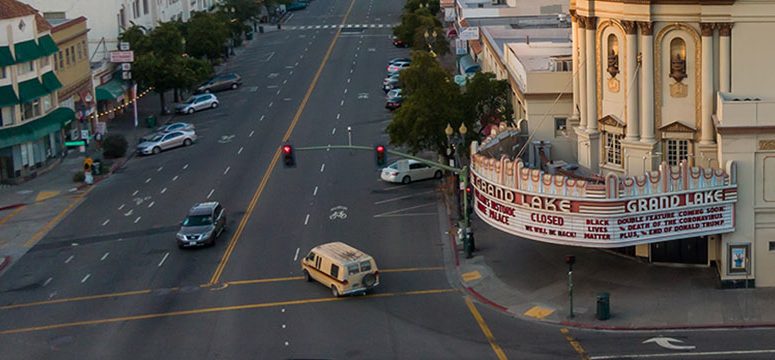After over 23 years of increasingly expensive project proposals and over a decade of construction, which went grotesquely over budget, San Francisco’s Central Subway opened on November 19, 2022. In the following years, the Central Subway was frequently regarded as disproportionately inefficient for its almost $2 billion price tag and even made headlines when red plastic party cups were used as drain pipes at the Union Square/Market St station.
The Central Subway undoubtedly had a rough start, but 3 years later, a more hopeful future seems to be on the horizon. Much of this hope lies in the proposed “phase 3” of the Central Subway, which would extend it beyond its final stop in Chinatown and into North Beach. The construction of a station in North Beach also brings Muni one step closer to the more distant prospect of a Fisherman's Wharf station, which is included in the Phase 3 Extension plan.
Completing the extension would be critical to both the success of the Central Subway and addressing the broader needs of transit in San Francisco. Most importantly, the execution of this proposal seems far more realistic than most would imagine.
In the construction of the first phase of the Central Subway, two tunnel boring machines (TBMs) were used to dig out the underground portion of the Central Subway, from the Yerba Buena/Moscone station to the Chinatown station. Following the completion of these tunnels, Muni acquired a vacant lot across the street from Washington Square Park to extract the 20-foot diameter boring machines from San Francisco’s underground. This vacant lot was the closest property that was viable for the off-street TBM retrieval.
The extraction project conveniently left behind two tunnels, both viable for metro development, ranging roughly half a mile from the existing Chinatown station to the epicenter of San Francisco’s flourishing and tourist-centric North Beach neighborhood. In its entirety, including the TBM retrieval, the tunneling cost Muni $233 million. The project involved carefully navigating building foundations and underground utilities, all while minimizing disruptions to businesses and traffic above ground. Tunneling is among the most strenuous parts of underground railway construction, so the existence of the tunnels from Chinatown to North Beach would greatly reduce the difficulty and price of moving forward with the Central Subway Phase 3 extension.
Taking advantage of these existing tunnels is important because the Phase 3 Extension stands as a crucial step towards the success of the Central Subway and improving access across one of the city’s most dense, vibrant, and high-demand corridors. It is a core belief in public transportation that population density is among the most important components for a successful urban rail network.
Simply put, the more people who live within walking distance to public transportation, the more incentive there is to use it. This is especially true in San Francisco, where car ownership is lowest in its most densely populated neighborhoods.
Along with the existing Chinatown station, the proposed North Beach station is among San Francisco’s densest areas. Accordingly, it has the potential to serve the hundreds of thousands of people living in close proximity to the proposed station, providing direct and traffic-free transportation to downtown, the public transportation hub of the Bay Area, and the most job-dense area in San Francisco.
With an extension to North Beach and possibly Fisherman's Wharf, the Central Subway would also become a straightforward line of transportation between the most heavily visited tourist destinations in San Francisco, including Powell St/Union Square and Chinatown, where stations are already situated. Both tourism and the need for light rail transportation in the North Beach corridor suggest that the extension would bring new heights of ridership to the Central Subway.
Despite some initial advancements following its inception, the Phase 3 Central Subway Extension has unfortunately received little to no attention in recent years. A concept feasibility study for the project was published back in 2015, and a subsequent alternatives study was proposed in the following years. In 2021, the Phase 3 Extension project was prioritized in San Francisco’s ConnectSF Transit Strategy, but no further progress was ever made within the alternatives study due to the pandemic.
I reached out to Liz Brisson, a SFMTA transit corridor planning manager, for more information on the status of the Phase 3 Extension. Brisson described the project's future as “uncertain,” but added that “community support for transit expansion projects is always an important factor for their success.”
Although the extension may currently be far from completion, consistent community support is the first step in unlocking its potential. Writing letters or attending hearings can make a real difference in showing the city that this project has widespread backing.
For instance, the Central Subway’s Chinatown station was a result of decades of advocacy from Chinatown residents, represented through the Chinatown Community Development Center and various other grassroots organizations. Until the Phase 3 Extension receives proper consideration, the tunnels will remain dormant beneath San Francisco for the foreseeable future. The sooner progress is made towards the completion of this project, the sooner San Francisco can build on past investments and take advantage of the Central Subway's full potential.
***
Tommy Laguna is a 16-year-old transit enthusiast and student at the Jewish Community High School of the Bay. Born and raised in San Francisco, he'grew up skateboarding and riding Muni across the city.






